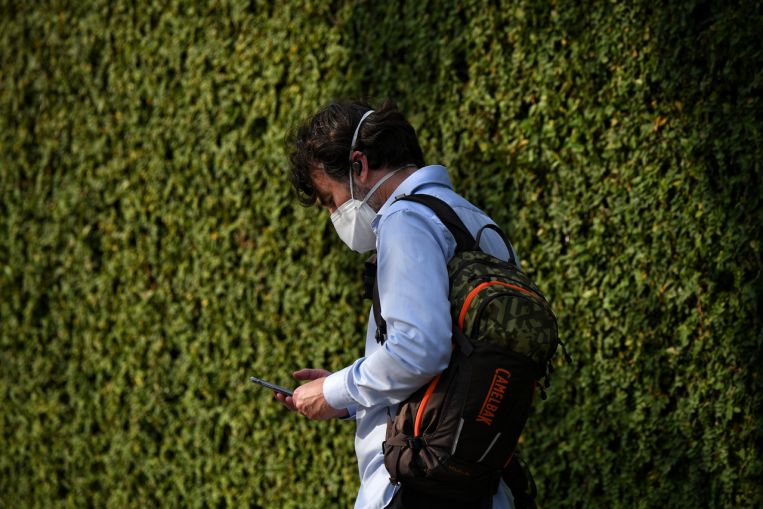(NYTIMES) – You are out with a few friends after a long day at the (Zoom) office.
You have been presenting a professional version of yourself for eight hours and are so relieved to speak freely at last, with as much slang, intonation and irony as you like.
Then another friend joins your group and sits with perfect posture, contributing humourless and grammatically impeccable sentences to the conversation.
Are you at ease? Or is this person kind of rubbing you the wrong way?
If you can imagine yourself in this situation, then you can understand how many young people feel when they receive a text buttoned up with a big, authoritative full stop.
To younger generations, using proper punctuation in a casual context like texting can give an impression of formality that borders on rudeness, as if the texter is not comfortable enough with the texting partner to relax.
The message-ending full stop establishes a certain distance. The punctuation is polite when speaking to someone older than you or above you at work, but off-putting among friends.
Simply put, the inclusion of a formality in casual communication is unnerving.
Think of a mother using her son’s full name when issuing a stern ultimatum. Or of an upset lover speaking to a partner in a cool, professional tone, withholding intimate silliness and warmth to convey frustration.
People gain and express interpersonal comfort through unpolished self-presentation, and acting (or writing) too formally comes off as cold, distant or passive-aggressive.
It is also worth noting that more of people’s casual communication is digital now than ever before, so texting etiquette carries at least as much weight as speaking tone.
Good news: The mid-text full stop is still fair game. Only when it is the last character in a message does the full stop assume its tonal heft.
Some experts, such as Lexicon Valley podcast host John McWhorter, can attest to the fact that, just as rehearsed speeches are analogous to formal writing, casual speaking is analogous to texting.
Linguists Naomi Baron and Rich Ling concluded in a 2007 study that “the act of sending a message coincides with sentence-final punctuation”.
Using “text speak” has also been analysed as a form of situational code switching. In other words, not using full stops is a way for texters to indicate that they are feeling relaxed with the recipient.
Gretchen McCulloch, Canadian linguist and author of Because Internet, dedicated an entire chapter of her book to “typographical tone of voice”, which explores not only full stops and ellipses as signifiers of tone, but also typing in all caps, which is seen as yelling; using asterisks and tildes for emphasis; the all lowercase “minimalist typography”, which can indicate a kind of deadpan, sarcastic monotone; and, of course, tYp1nG l1k3 th!z. This is called “l33t (elite) speak”, and while it was once a sincere and popular way of spicing up texts, it is now employed almost exclusively in irony.
The consensus is that many texters, especially young people, see end-of-message full stops as tonally significant because they are unnecessary. It is clear that a message has ended regardless of punctuation because each message is in its own bubble. Thus, the message break has become the default full stop.
This pressure to get one’s thoughts across is intensified when correspondents are aware that the people they are texting know they are typing – as with speech, there is a rhythm that both parties in the conversation are responsible for maintaining.
To avoid keeping their pals in suspense, therefore, texters send out single, often unpunctuated phrases rather than full sentences.
McCulloch recognises that adapting to this new convention may be difficult for older texters.
“There’s a tendency for people to believe that the rules they learnt in school are fixed and unchangeable and everything after that is a barbarism, but that’s not how society works,” McCulloch said.
With the full stop established as a signifier of seriousness in texts, other kinds of writing may have started to use it as such too.
The full stop may have started to signify tone in social media posts and even online headlines, which have started employing more full stops in recent years.
Even though each generation would like to think it is the arbiter of style, the new conventions surrounding the full stop are just one episode in a centuries-long history of grammatical exploration.
Experiments with punctuation began long before mobile phones or the Internet.
Consider postcards, in which the dash was employed to indicate the kind of self-interruption that happens when one thought runs into another and the ellipsis conveyed a casual trailing off.
McCulloch pointed to even earlier reference points: James Joyce’s 1922 classic Ulysses and the poems of E.E. Cummings.
The final chapter of Ulysses is a 40-page stream of one character’s uninterrupted private thoughts, punctuated by only two full stops.
Cummings’ poems play with words and punctuation to create an emotional atmosphere, rather than to be simply correct.
“They have this stylised kind of incoherence that conveys this very particular impression even though the words themselves don’t quite make sense,” McCulloch said.
These writers were experimenting and their language was explicitly artful, unlike most text messages.
Authors such as bell hooks, of course, contribute more directly to this literary tradition than the average teenager with a smartphone.
But the writers’ “lawless” usage (or omission) of punctuation demonstrates that people have long looked beyond grammar rules when trying to represent organic thought, speech or feeling in writing.
Long story short, the so-called rules of punctuation are not preserved, lifeless, as if in amber.













































